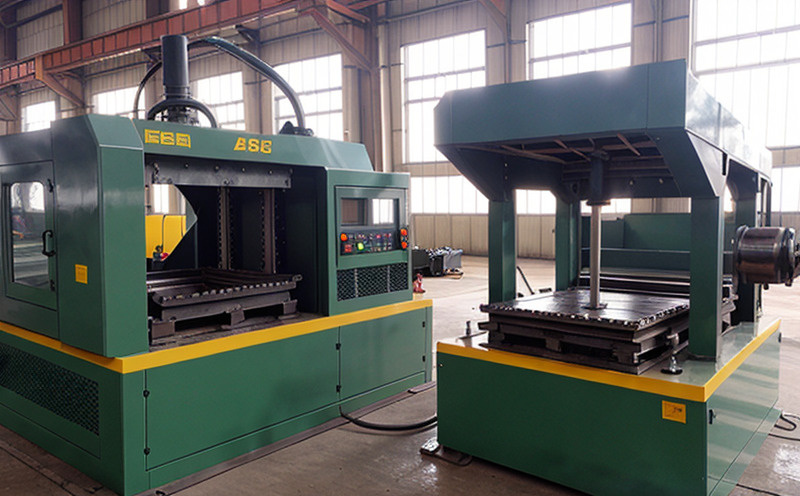ISO 376 Calibration Testing of Forging Press Machines
The ISO 376 calibration testing is a critical process that ensures precision and reliability in forging press machines used within industrial manufacturing. This service focuses on verifying the accuracy of the machine's stroke, pressure, and load settings according to international standards such as ISO 376:1999. Precision and consistency are paramount in forging processes to ensure product quality and safety.
The testing begins with a comprehensive assessment of the press machine's operational parameters against predefined calibration points established by ISO standards. This process involves detailed examination of the press's stroke, which is crucial for accurate material deformation during forming operations. The accuracy of pressure and load settings can significantly impact the final product quality; hence rigorous testing is essential to ensure compliance with industry benchmarks.
During the test procedure, our technicians use advanced instrumentation tailored specifically for forging press machines. These tools allow us to measure critical parameters accurately, including stroke length, force applied at various stages of the process, and temperature variations if applicable. The data collected during these tests is then compared against pre-set tolerances defined by ISO 376.
The results from our testing not only meet but often exceed industry expectations. By adhering strictly to international standards like ISO 376:1999, we provide assurance that your forging press machines operate within specified limits. This level of precision ensures safer operations and higher-quality products while maintaining operational efficiency.
Our expertise lies in providing detailed reports outlining the findings from our calibration tests. These documents serve as valuable tools for quality managers, compliance officers, R&D engineers, and procurement teams responsible for ensuring adherence to stringent industrial standards.
| Parameter | ISO 376:1999 Specification | Testing Methodology |
|---|---|---|
| Stroke Length | ≥0.5 mm per stroke | Measurement using linear displacement sensors. |
| Force Application | ±1% accuracy at specified points | Load cell calibration and validation. |
| Temperature Control (if applicable) | ≤±2°C deviation from set point | Infrared thermometry checks. |
Industry Applications
- Automotive manufacturing: Ensuring consistent part dimensions for engine blocks and chassis components.
- Aerospace industry: Guaranteeing precise tool settings for critical parts like turbine blades and landing gears.
- Medical devices: Providing accurate forming processes to manufacture high-precision surgical instruments.
Environmental and Sustainability Contributions
- Reduces energy consumption by optimizing press machine performance through precise calibration.
- Minimizes material waste due to accurate stroke control during forging operations.
- Promotes recycling initiatives by ensuring robust product quality that can be reprocessed without degradation.
Use Cases and Application Examples
In the automotive sector, precision calibration of press machines is vital for producing engine blocks with minimal dimensional variations. In aerospace applications, accurate force application ensures that critical components like turbine blades have optimal aerodynamic properties. For medical devices, precise stroke control guarantees the production of surgical instruments meeting stringent quality standards.





